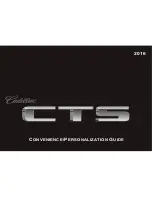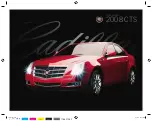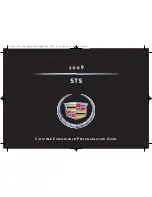
Based on the severity and type of collision, the side air
bag inflator on the crash side of the vehicle may be
triggered, releasing a quantity of non-toxic gas. The
inflating SAB exits through the seat seam into the space
between the occupant and the door. The SAB fully inflate
in about 10 milliseconds. The side air bag moves at a very
high speed and with such a high force that it could injure
you if you are not seated properly, or if items are
positioned in the area where the side air bag inflates. This
especially applies to children.
Supplemental Side Air Bag Inflatable Curtain
(SABIC) Inflator Units
During collisions where the impact is confined to a
particular area of the side of the vehicle, the ORC may
deploy the SABIC air bags, depending on the severity
and type of collision. In these events, the ORC will
deploy the SABIC only on the impact side of the vehicle.
A quantity of non-toxic gas is generated to inflate the side
curtain air bag. The inflating side curtain air bag pushes
the outside edge of the headliner out of the way and
covers the window. The air bag inflates in about 30
milliseconds (about one-quarter of the time that it takes
to blink your eyes) with enough force to injure you if you
are not belted and seated properly, or if items are
positioned in the area where the side curtain air bag
inflates. This especially applies to children. The side
curtain air bag is only about 3-1/2 in (9 cm) thick when
it is inflated.
Because air bag sensors estimate deceleration over time,
vehicle speed and damage are not good indicators of
whether or not an air bag should have deployed.
Front And Side Impact Sensors
In front and side impacts, impact sensors can aid the
ORC in determining appropriate response to impact
events.
2
THINGS TO KNOW BEFORE STARTING YOUR VEHICLE
65
Summary of Contents for 2011 Challenger SRT
Page 1: ...Challenger SRT L 1 ...
Page 4: ......
Page 7: ...INTRODUCTION 5 ...
Page 10: ......
Page 86: ......
Page 120: ...118 UNDERSTANDING THE FEATURES OF YOUR VEHICLE ...
Page 121: ...3 UNDERSTANDING THE FEATURES OF YOUR VEHICLE 119 ...
Page 122: ...120 UNDERSTANDING THE FEATURES OF YOUR VEHICLE ...
Page 175: ...INSTRUMENT CLUSTER 4 UNDERSTANDING YOUR INSTRUMENT PANEL 173 ...
Page 241: ...UNDERSTANDING YOUR INSTRUMENT PANEL 239 ...
Page 301: ...STARTING AND OPERATING 299 ...
Page 354: ......
Page 406: ......
Page 437: ...INDEX 10 ...
















































